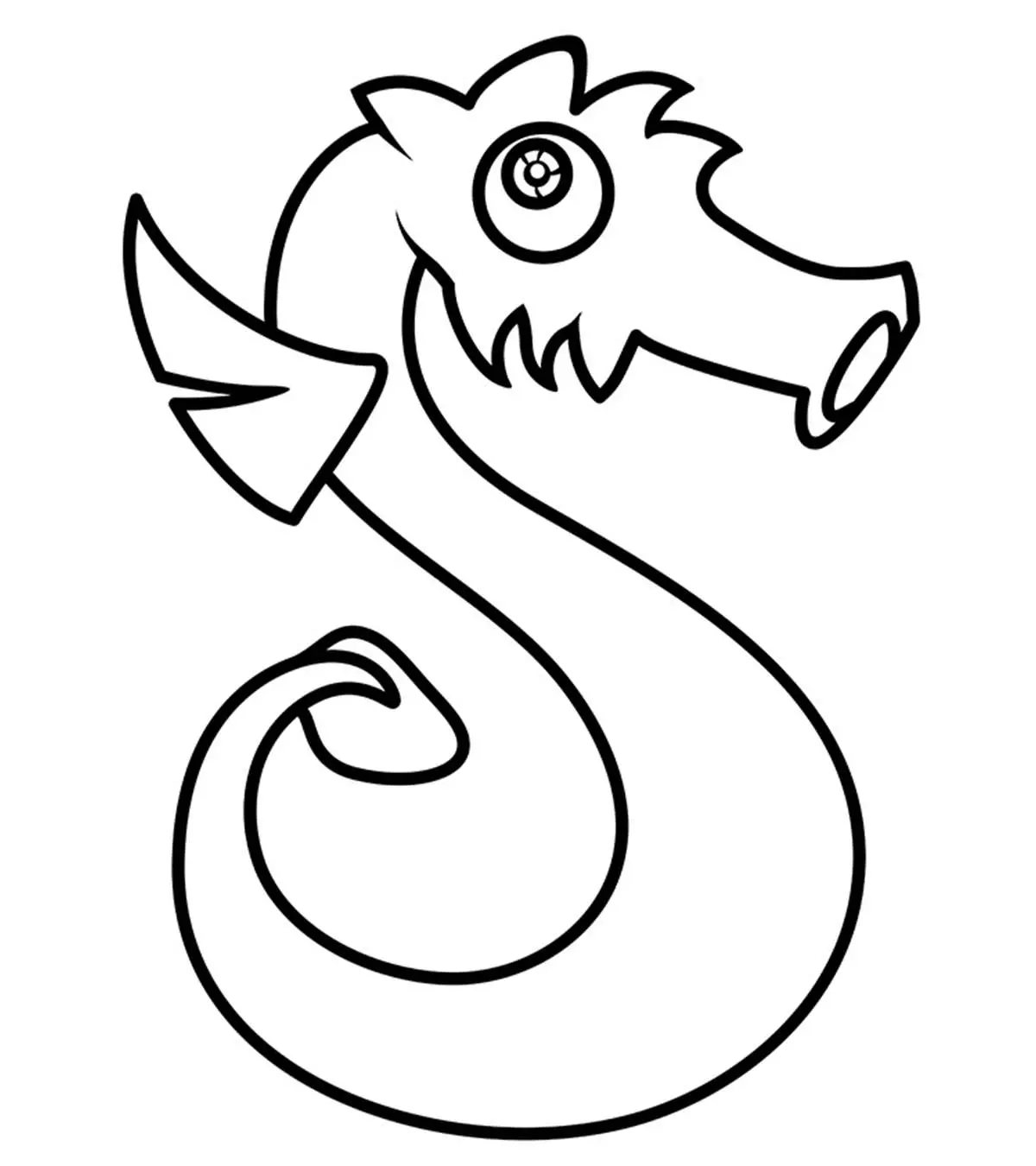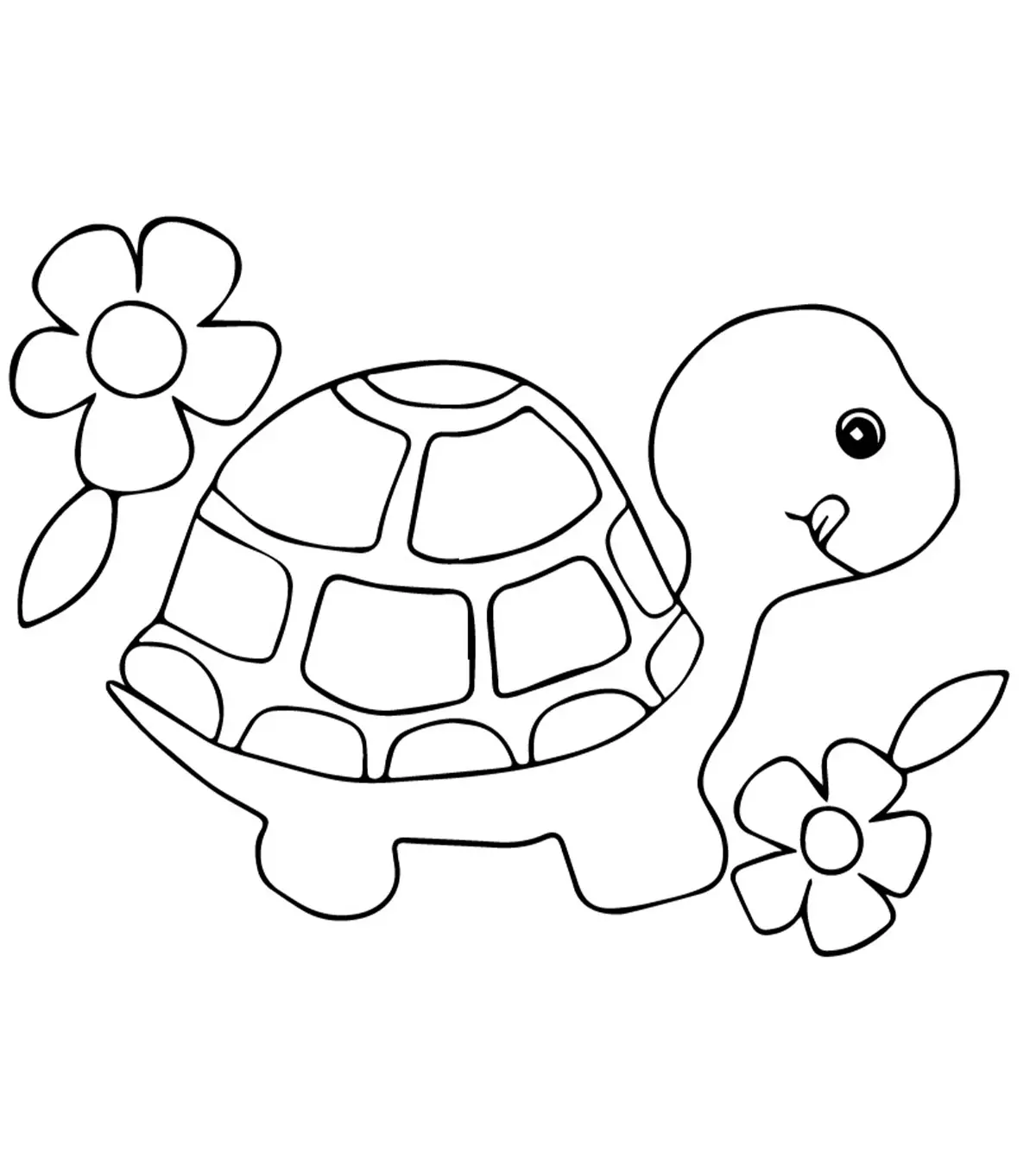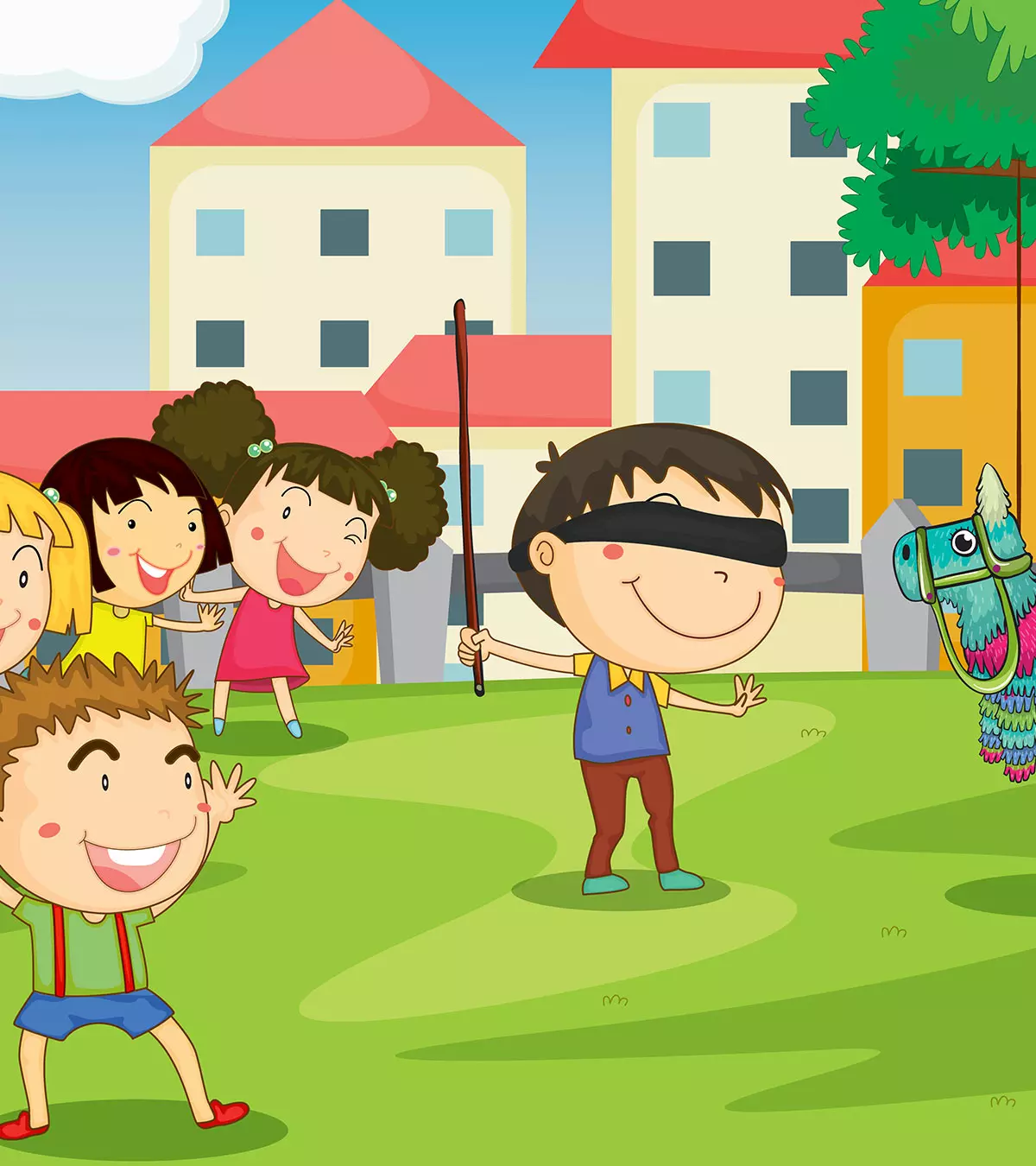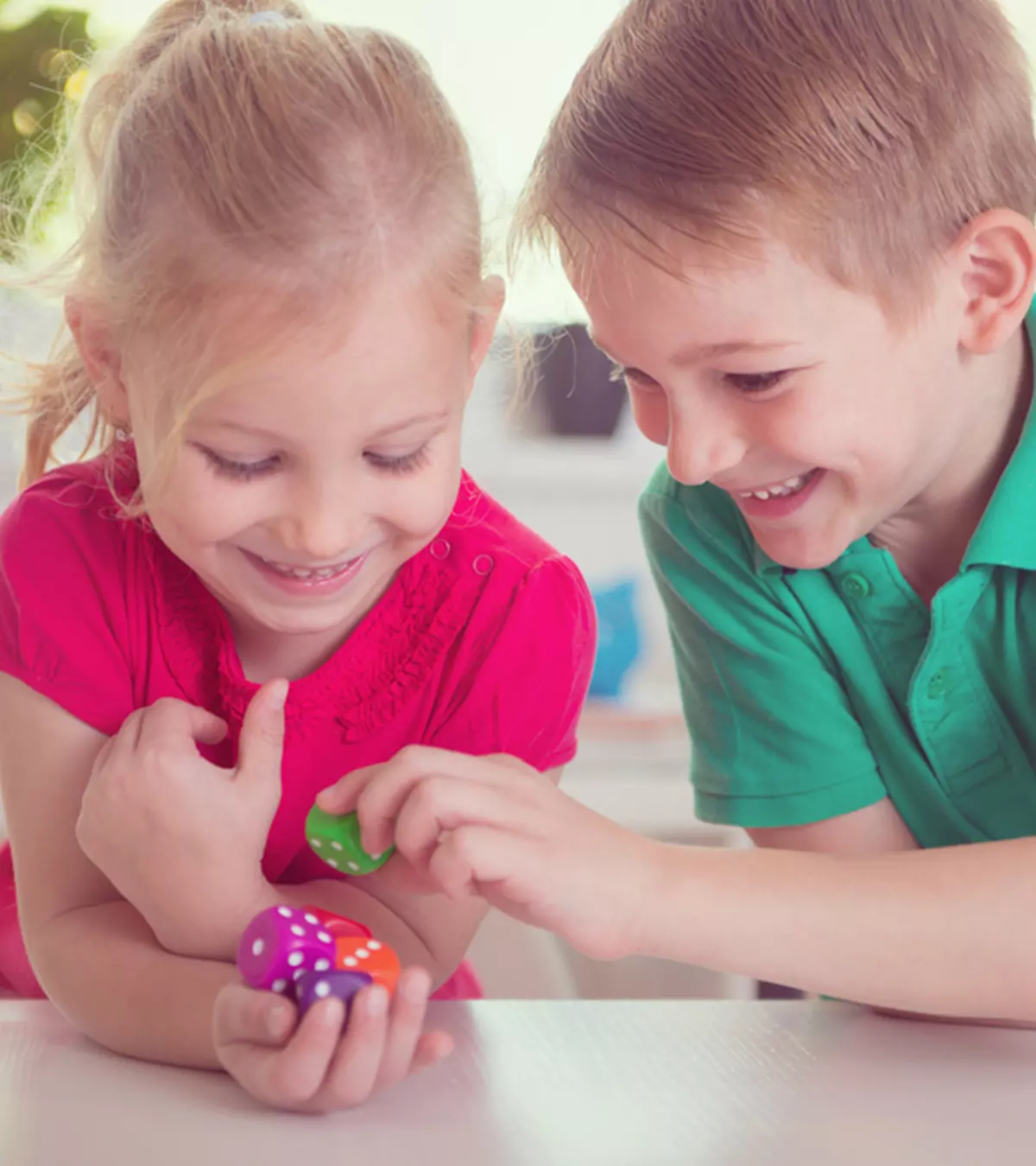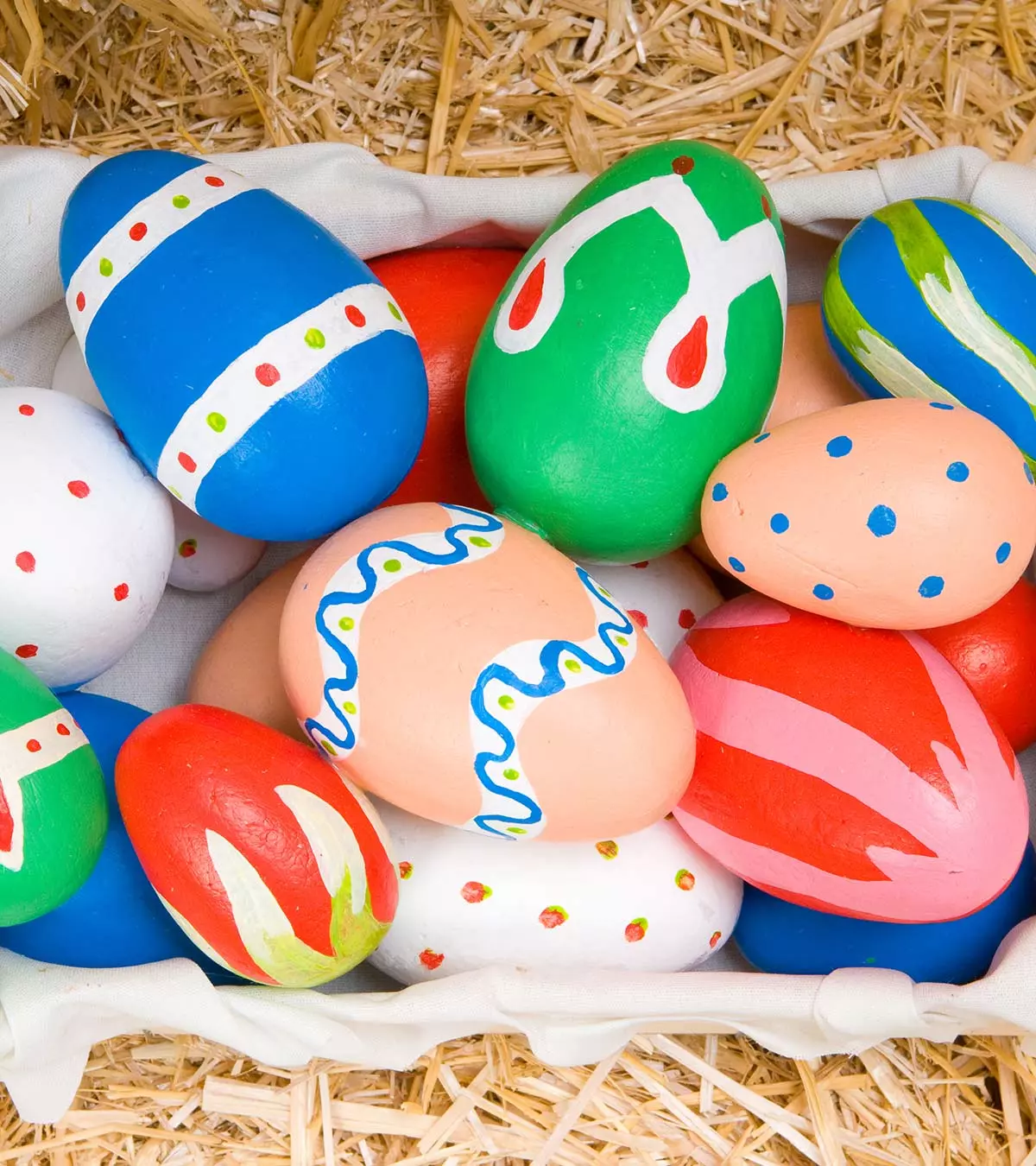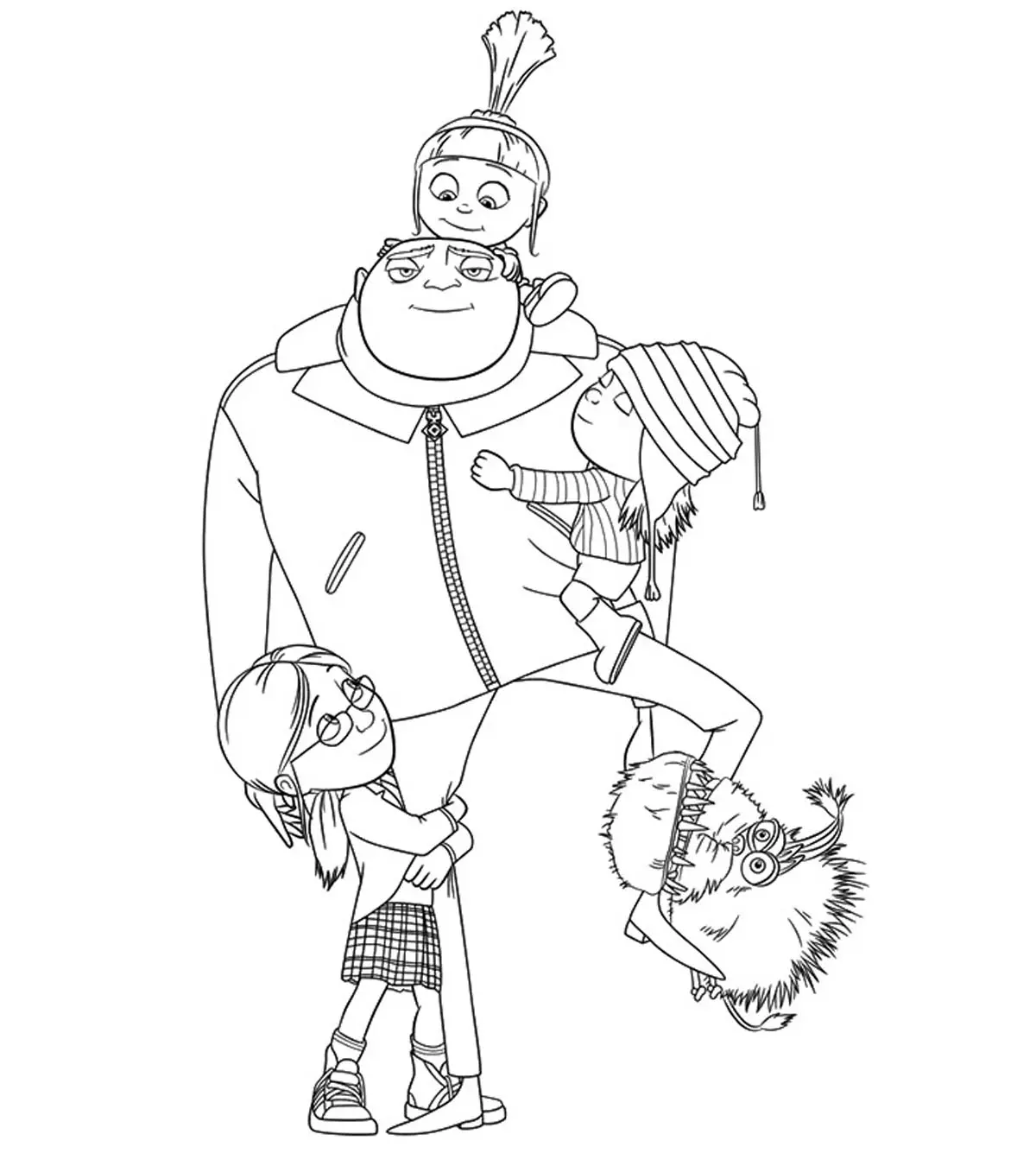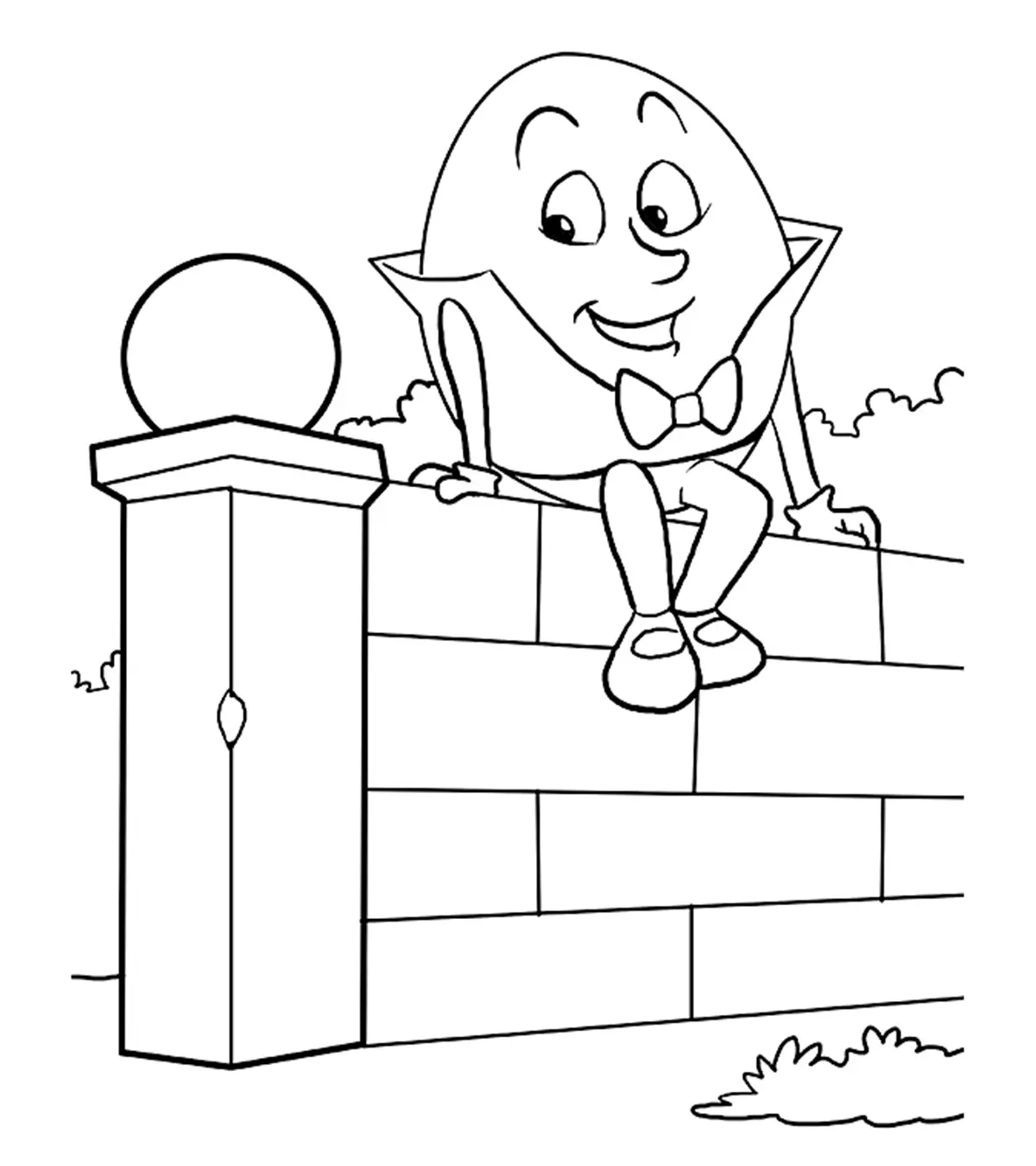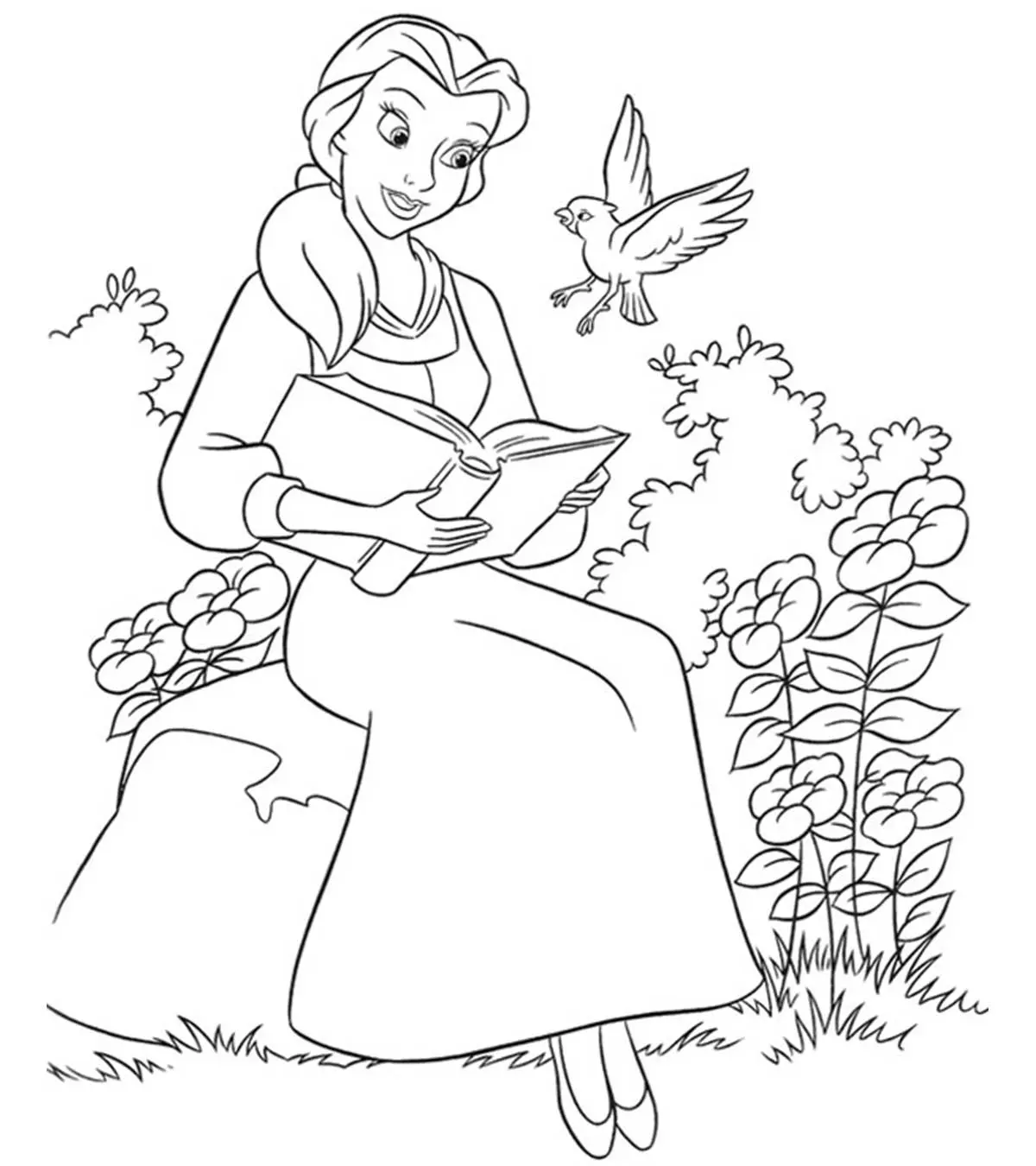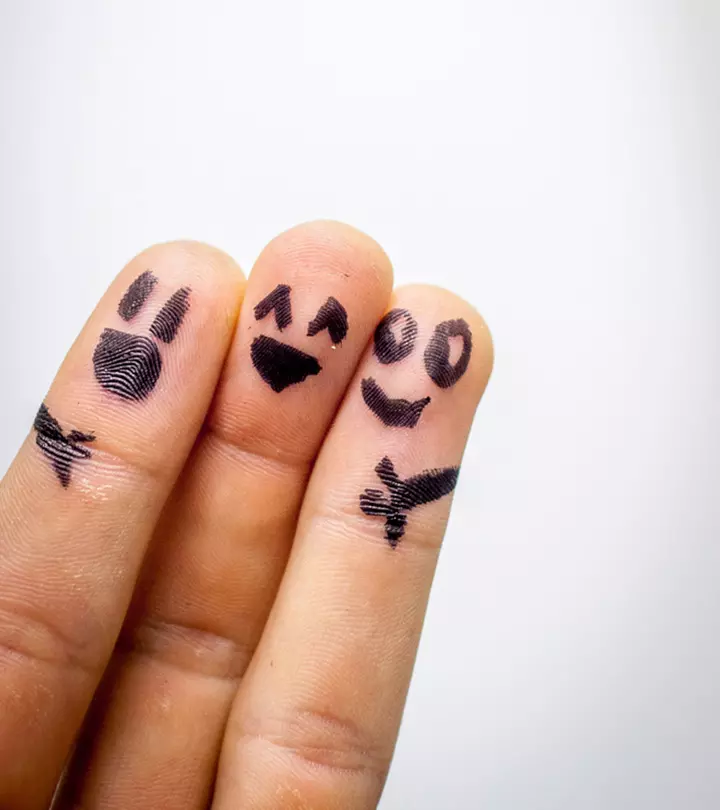
Image: Shutterstock
Fingerplays for preschoolers/toddlers involve nursery rhymes, movements, singing songs, and dancing and require children to make simple finger and hand movements. These are great activities for promoting their fine and gross motor skills, encouraging language development, and improving their social skills. Fingerplays also help develop children’s cognitive skills through rhythm and repetition, making them a vital element of early childhood education.

The activities are also fun-filled and pretty easy to learn for preschoolers. Hence, they are usually taught in kindergarten. Furthermore, these give you a chance to play with your little ones and spend quality time. Keep reading this post as we bring you some interesting fingerplay ideas to keep your children entertained for hours.
 Did you know?
Did you know?Key Pointers
- Fingerplays involve playful finger and hand movements, usually in a rhythm or pattern.
- This simple form of play could help improve a child’s motor skills while also providing tons of fun.
- Five little ducks, Five speckled frogs, and Hickory Dickory dock are some finger games that get toddlers laughing and rolling.
21 Finger-Plays For Toddlers And Preschoolers
Finger-plays for toddlers are useful when you need a quick activity to entertain your children, such as traveling in a car or waiting in long queues. These toddlers and preschool finger-plays also give children an opportunity at imaginative play, learning and exploring the world around them while having fun.
1. Finger family
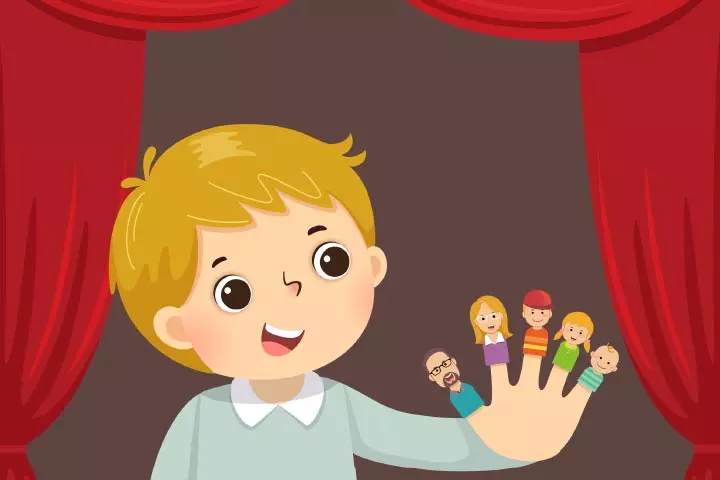
Finger family is one of the most popular finger games for children. This activity teaches kids about the names and relations of every family member. You can even turn it into a singing game.
The rhyme goes as:
Daddy finger, daddy finger, where are you? (hold out your thumb)
Here I am, here I am! How do you do? (for the thumb)
Follow with mommy finger, brother finger, sister finger, and baby finger using the index, middle, ring, and pinky fingers respectively.
2. Five little ducks
This is another rhyme that children may enjoy singing. It teaches children to count using their fingers.
The rhyme goes as:
Five little ducks went out one day (hold up five fingers)
Over the hills and far away
Mother duck said, “Quack, quack, quack, quack!”
But only four little ducks came back (fold down one finger)
A duck goes missing each time you fold a finger. Hence, continue doing so until all the ducks disappear. Now, Mother duck finds everyone in the end.
3. Itsy bitsy spider
Engage your child with storytelling, starting with the story of Itsy Bitsy Spider. It will quickly grab your child’s attention and teach them perseverance. This finger-play talks about a spider’s attempt to go up a water spout until it succeeds.
The rhyme goes as:
Itsy Bitsy Spider climbed up the water spout
Down came the rain and washed the spider out
Out came the sun and dried up all the rain
Then Itsy Bitsy Spider climbed up the spout again
Make a tiny spider by wiggling your fingers together and imitating the actions in the song.
 Trivia
Trivia4. Heads and shoulders
‘Heads, shoulders, knees, and toes’ is a rhyme that requires the children to touch each body part when they recite it. Join in on the fun to turn this into a more interactive activity.
The rhyme goes as:
Head, shoulders, knees and toes, knees and toes
Head, shoulders, knees and toes, knees and toes
And eyes and ears and mouth and nose
Head, shoulders, knees and toes, knees and toes
This finger-play teaches children about various body parts. You can also talk about each function to make the play furthermore interesting.
5. Five speckled frogs
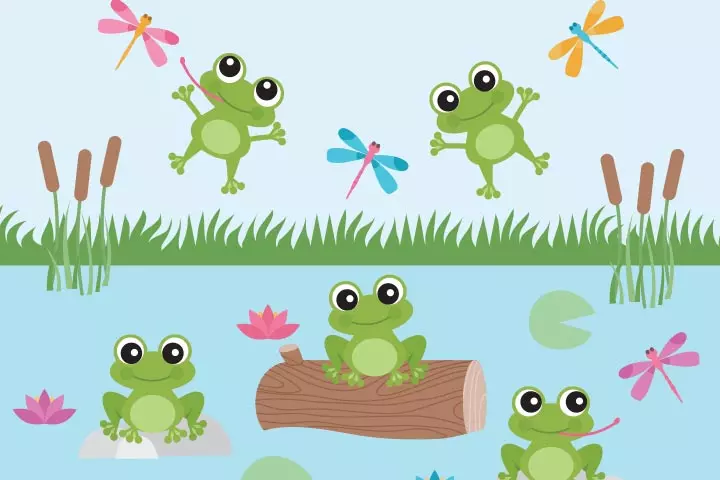
This is a funny rhyme about frogs who eat bugs. It is sure to get your kids laughing and draw their attention to the story.
The rhyme goes as:
Five little speckled frogs
Sat on a speckled log
Eating the most delicious bugs
Yum yum!
One jumped into the pool
Where it was nice and cool
Then there were four speckled frogs
Glub glub!
Start with five fingers and fold a finger every time one frog jumps in. Continue until no frogs are left. You can massage your tummy with the line “Yum yum!” Hold your nose and sink on the line “Glub glub!”
6. Hickory dickory dock
This is one of the most popular nursery rhymes for toddlers and preschoolers as it involves finger gestures and body movements that are interactive and fun.
The rhyme goes as:
Hickory Dickory dock
The mouse ran up the clock
The clock struck one
The mouse ran down
Hickory Dickory dock
Children have to put a finger up for one o’clock, then two fingers for two o’clock, and so on. They can also use their index and middle fingers to show the mouse running up and down the clock.
7. Wind the bobbin up
Another hit finger-play activity that you can try for your toddler.
The rhyme goes as:
Wind the bobbin up, wind the bobbin up
Pull pull
Clap clap clap
Wind it back again, wind it back again
Pull pull
Clap clap clap
Point to the ceiling
Point to the floor
Point to the window
Point to the door
Clap your hands together, one, two, three
Put your hands upon your knees
Use your fists to wind the bobbin up and down with circular motions. Pull your fists apart for the “pull-pull” and clap for the “clap…” line. Point to ceiling, floor, or whatever is mentioned in the rhyme and then repeat the first six lines along with the actions.
8. Where is Thumbkin?
‘Where is Thumbkin’ is similar to the ‘Finger Family’ song. You use only two fingers for this activity though you can extend it to all the other fingers.
The rhyme goes as:
Where is thumbkin? (wiggle your left thumb)
Where is thumbkin? (wiggle your right thumb)
Here I am! (wiggle left thumb)
Here I am! (wiggle right thumb)
How are you today sir? (shake left thumb at right thumb)
Very well I thank you (shake right thumb at left thumb)
Run away! (hide left thumb behind your back)
Run away! (hide right thumb behind your back)
Repeat the same rhyme for Pointer. You can even draw cute finger faces with markers on your child’s fingertips.
9. Here is the beehive

This rhyme helps children make word and sound associations. It also teaches counting and can help children learn to appreciate insects such as bees.
The rhyme goes as:
Here is the beehive (make a fist)
Where are the bees? (ask this question with the other hand)
Hiding inside where nobody sees!
Watch them come creeping out of the hive
One, two, three, four, five (hold up one finger from the fist to show each bee)
Buzzzz! (make a buzzing sound while wiggling the outstretched fingers)
To add more excitement to this finger-play activity, you can also paint honeybees on the tip of your fingers.
10. Round and round the garden like a teddy bear
Try this fun finger-play activity to tickle your child and get them laughing hard.
The rhyme goes as:
Round and round the garden like a teddy bear (circle one hand using index finger of the other hand)
One step
Two step
Tickle you there!
The steps are to be taken by the index finger and start tickling as the rhyme continues.
11. Five in the bed
This is another popular song that children of all ages love singing and dancing to.
The rhyme goes as:
There were five in the bed (hold up five fingers)
And the little one said,
Roll over, roll over (move your hands around each other in a circular motion)
They all rolled over, and one fell down (fold one finger)
Four!
Continue the same actions for three, two, and one.
12. Five little monkeys
In this energetic finger-play activity, children can wiggle, shake their fingers and jump around as well.
The rhyme goes as:
Five little monkeys (hold up five fingers)
Jumping on the bed (jump on the spot)
One fell down (make a downward motion with your hands)
And bumped his head (hold your head)
Mama called the doctor (hold out your thumb and little finger to make a telephone and hold it near your ear)
The doctor said,
No more monkeys jumping on the bed (wiggle your index finger sideways to indicate ‘no’)
Repeat the same steps for four, three, two, one, and until there are no more monkeys.
13. Baby shark

This song would leave everyone humming to “doo doo doooo” on repeat.
The rhyme goes as:
Baby shark (keep moving your thumb and index finger closer and apart)
Doo doo doo doo doo doo
Baby shark doo doo doo doo doo doo
Baby shark doo doo doo doo doo doo
Baby shark!
Repeat for Mommy shark (join both your palms at the wrist, now open and close them),
Daddy shark (stretch your hands out straight and bring the palms together, now pull them apart),
Grandma shark (repeat the same action as Mommy shark but with fists closed),
and Grandpa shark (same as Daddy shark but with fists closed).
Let’s go hunt (join both palms and hold them above your head)
Doo doo doo doo doo doo
Run away (jump in place)
Doo doo doo doo doo doo
Safe at last (wipe brow)
Doo doo doo doo doo doo
Repeat singing and dancing to this poem until the shark hunts down the fish. You can even add some background music to make it more fun.
 Quick fact
Quick fact14. Wheels on the bus
‘Wheels on the bus’ has all the elements a child would love. A fun rhythm, exciting sounds, and a colorful bus!
The rhyme goes as:
The wheels on the bus go round and round (make fists using both hands and rotate them in a steering position)
Round and round, round and round
The wheels on the bus go round and round
All day long
You can also play along the other lines “The doors on the bus go open and shut,” “The wipers on the bus go swish, swish, swish,” “The engine of the bus goes vroom, vroom, vroom,” and so on. You can even include some role-playing where children can play passengers and the driver.
15. Tiny turtle
This is an adorable finger-play activity that can quickly grab your child’s attention and keep them engaged.
The rhyme goes as:
I have a tiny turtle (place one hand over the other and move your thumbs to indicate swimming)
His name is Tiny Tim (bring your thumb and index finger closer together to show tiny)
I put him in the bathtub (make swimming movements using both hands)
To see if he could swim!
He drank up all the water (hold your thumb out and make a drinking gesture)
And ate up all the soap (move your mouth to indicate chomping)
Now he has a bubble (hold your thumb and index finger to form an ‘O’ shape)
In the middle of his throat! (hold the ‘O’ shape near the throat)
Bubble, bubble, bubble… POP!! (make a popping sound)
You may also use a bubble gun to make it visually appealing for your little one.
16. Five little hot dogs
This is a fun activity where children can learn counting.
The rhyme goes as:
Five little hot dogs (hold up five fingers)
Frying in a pan (place the fingers on the open palm of the other hand)
The grease got hot
And one went BAM! (clap hands to indicate the burst)
Continue the same actions for four, three, two, and one hot dog.
17. Bubble, bubble, pop
If your child loves Dr. Seuss’s stories, they might enjoy this song too. This activity teaches them colors and numbers while having lots of fun.
The rhyme goes as:
One little red fish (place a hand on another and enact swimming using your thumb fingers)
Swimming in the water (move your hands around pretending to swim)
Swimming in the water
One little red fish swimming in the water
Bubble, bubble, bubble, bubble… POP! (move both your hands in a circular manner to show bubbles traveling upward and clap to pop)
Continue the same actions for “Two little blue fish,” “Three little green fish,” “Four little yellow fish,” and so on.
18. Pitter patter
If it’s raining and your children cannot go out to play, try this finger-wiggling activity.
The rhyme goes as:
Pitter patter, pitter patter (wiggle fingers to show falling rain)
Listen to the rain
Pitter patter, pitter patter
Falling on my pane (tap fingers lightly on the desk or counter)
Don’t blame us if your children fall in love with rain after this activity. Wink, wink!
19. Twinkle twinkle little star

This popular song that children often learn in their early years can be a good activity for finger-play too.
The rhyme goes as:
Twinkle twinkle little star (put your palms up and wiggle the fingers indicating shining stars)
How I wonder how you are (move your hand to ask a question)
Up above the world so high (point upwards)
Like a diamond in the sky! (join both index fingers and thumb to each other, forming a diamond)
20. One, two
This is a fast-paced finger-play activity that children may enjoy singing and dancing to without using any props.
The rhyme goes as:
One, two, buckle my shoe (hold up one, then two fingers, and pretend to tie your shoelace)
Three, four, shut the door (hold up three and four fingers, now pretend to shut the door)
Five, six, pick up the sticks (hold up five and six fingers, then pretend to pick up something from the ground)
Seven, eight, lay them straight (hold up seven and eight fingers, now pretend to put the sticks straight)
Nine, ten, a big, fat, hen! (hold up nine and ten fingers, impersonate a fat hen)
21. Baby bumble bee
This is a medium paced finger-play activity that your children will love to play with their buddies.
I’m bringing home a baby bumblebee,
Won’t my mommy be so proud of me (Cup your hands together as if holding bee),
I’m bringing home a baby bumblebee,
Ouch! It stung me! (Shake your hands as if in pain)
I’m squishing up the baby bumblebee,
Won’t my mommy be so proud of me, (Pretend to squish the bee between palms of your hands)
I’m squishing up a baby bumblebee,
Ooh! It’s yucky! (Open up hands to look at the mess while making a face)
I’m wiping off the baby bumblebee,
Won’t my mommy be so proud of me, (Wipe hands off on your dress)
I’m wiping off the baby bumblebee,
Now my mommy won’t be mad at me! (Hold your hands up to show they are clean)
Frequently Asked Questions
1. How does finger play help in self-regulation?
Finger play with songs that change tempo can help children self-regulate their movements as they listen intently and switch between fast and slow actions to match the song’s speed.
2. What are finger play cards?
Finger play cards contain the words and motions of different finger play songs so that parents or teachers can easily teach them to children.
3. How can I make fingerplays a fun and engaging part of the daily routine with preschoolers?
You can use fingerplay to teach rhymes, melodies, or songs, such as hello songs for preschoolers. It can also be used for storytelling, as it adds a tactile and interactive element to the narrative, fostering children’s imagination. You can club fingerplay with catchy music and vibrant props to captivate a child’s interest and make learning more fun for them. Introducing shapes, colors, letters, or other educational concepts, such as self-care and hygiene, are other aspects where fingerplay can be used in the daily routine.
4. How can fingerplays benefit children socially?
Engaging in fingerplays can be one of the best social/emotional activities for toddlers as they involve taking turns and waiting, which can help children develop patience and respect others’ turns. These activities often involve group participation, which teaches children about peer interaction and cooperation. Indulging in fingerplay teaches children to synchronize their movements, actions, or singing with others, which helps hone their collaboration and teamwork skills. Fingerplay activities also allow children to express emotions and share experiences, which boosts their self-esteem and confidence.
5. What age group is best suited for fingerplays?
Fingerplays are ideal for children aged one to five years, as they help build important skills during these critical early developmental years.
These interesting fingerplays for preschoolers/toddlers are a great way to help your toddler have a fun time by moving their fingers to the rhythm of a song or poem. Encouraging toddlers to sing a poem/song and indulge in fingerplay can boost their motor and cognitive skills. Besides, the dancing, singing, and storytelling activities can keep the children entertained and engaged. Fingerplays can also act as effective language development activities for toddlers. So pick one of your child’s favorite poems and get started. Show your child the finger movements and ask them to imitate them. If your toddler wants to improvise, get them some finger puppets and guide them, but allow their imagination and creativity to run free!
Infographic: How To Practice Fingerplays With Toddlers?
Fingerplays play an important role in early education because they make learning fun. Keeping in mind the benefits of introducing fingerplays to children, we bring you an infographic explaining how to practice fingerplays correctly with toddlers.
Some thing wrong with infographic shortcode. please verify shortcode syntax
Illustration: Fun And Favorite Finger-Plays For Toddlers & Preschoolers

Image: Stable Diffusion/MomJunction Design Team
Sing and dance along with your favorite fingerplay songs! Enjoy the best compilation of fun and educational songs for children.
References
- What We Know About Girls Who Play Video Games (It’s Good!).
https://thegraysonschool.org/news-resources/girls-who-play-video-games/
Community Experiences
Join the conversation and become a part of our nurturing community! Share your stories, experiences, and insights to connect with fellow parents.
Read full bio of Kristen Miller
Read full bio of Nisha Bharatan
Read full bio of Rohit Garoo
Read full bio of Vibha Navarathna





